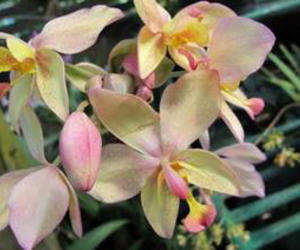Western province of Pinar del Río offers beauty to visitors
- Submitted by: manso
- Travel and Tourism
- 10 / 03 / 2011

VINALES, Cuba — Waterfalls, mountains and the handsomest farmer in Cuba. Those are the top three sights in the western province Pinar del Rio, where nature provides a lush setting for peaceful moments. Natural beauty, tranquility in Cuba's Pinar del Rio province. In August, travel writer Ellen Creager toured with the first Americans to visit Cuba legally under a new program. This week: Pinar del Rio province. Last week: Havana.
OK, there were a few not-peaceful moments, such as the 6-inch tarantula that swimmers found in the hotel pool. And the night my hotel room air conditioner broke down in a fit of rattling protest. And there were some treacherous missing steps at the waterfall and slippery slopes in a cave, so many that the motto of our group became “Don’t stumble.”
And the food was fairly wretched at the hotel, with the dinner menu offering “pork steak, roasted pork, fried pork chunks, chicken.” But after four days in effervescent Havana on the first legal “people-to-people” tour for American tourists in years, I was glad for sweet Pinar del Rio province.
Known for its national parks, it has tobacco farms, orchids, soaring limestone cliffs and picturesque towns. Out here, about three hours from the capital, there is little mention of Castro. However, many billboards feature Che Guevara, the Argentine doctor who was a co-leader of the Cuban Revolution in 1958-59. “To victory,” one suggests. Other than that, there are a lot of chickens, people out walking and small colorful houses. The local chapter of the Committee for the Defense of the Revolution threw us a party, with cake.
Many in the tour group ditched the hotel restaurant one night for an excellent private paladar restaurant, Villa Nene, stuffing themselves with lobster. There were lots of great old American cars painted in pastel colors. But the true major highlights, as I mentioned above, were three. Water falling: The Soroa waterfall is one of the most beautiful I have ever seen. Walk 292 steps down from the parking lot, then stand at the foot of the 66-foot waterfall that spills over rounded rock at the top. Swim in the warm blue pool below the falls, or just float in the stream that wanders away from the gentle water.
Near the falls is the gorgeous orchid garden, brimming with white ginger (called mariposa blanca in Cuba), figs, epiphytes and hibiscus trees, whose hard wood is used for Cuban baseball bats. The orchids bloom in winter, but you can see some forced in a greenhouse in summer. The garden was built by a Spanish man but is now, like most things in Cuba, owned by the government.
Mountains: In the Vinales National Park, the land spreads away in a broad, flat valley, punctuated by isolated broad columns of limestone. They are rounded off on the top like cupcakes and enwreathed with trees. Some of the domes, called mogotes , have limestone exteriors so worn away the gaps look like open mouths with sharp teeth. These domes also hide thousands of caves.
The group rode a boat underground through the El Indio cave, with its high ceilings and greenish stalactites. The Sierra del Rosario mountains in Pinar del Rio also contain the Las Terrazas Biosphere Reserve, which has reclaimed bare land to forest in just 40 years. Handsomest farmer in Cuba: At a Vinales tobacco farm, farmer Benito Camejo took us into his palm-frond tobacco barn and showed how tobacco is grown, harvested, stored and rolled into cigars. Honestly, the women were barely paying attention to what he was saying. They were staring at the tall, dark and handsome farmer with his open white shirt and low-brimmed hat. His moustache made him look like a cross between Ernest Hemingway and Juan Valdez. And when he lit the cigar! Women swooned. Photos snapped of Benito. And of the women with Benito. And of guys smoking cigars rolled by Benito. “Is he really a farmer, or an actor?” somebody whispered. But Camejo’s family has farmed on this plot since the 1840s, he told me in quite good English. “What’s the name of that farm?” someone asked the guide later. “Benito’s Farm,” he said.
EVERYBODY IS ON THE BEACH
Where are all the other tourists? There are 2.5 million a year to Cuba, but only a handful from the U.S. And while American tourists on the new “people-to-people” trips are kept busy with educational and serious cultural interactions, Canadians and other world travelers are lounging around drinking mojitos on Cuba’s gorgeous white sand beaches, similar to those in Jamaica or Grand Cayman.
The major tourist hot spots are Varadaro, Holguin and Cayo Coco. These and other Cuban beach areas have gigantic resort hotels, all-inclusives, stores within the compounds and many tourist trappings not found in “regular” Cuba. These hotels are mostly joint ventures between foreign hotel and resort developers and the Cuban government. Trinidad, in Cuba’s south, combines cultural themes with some beautiful beaches. Some people-to-people trips stop there. But my trip, from Havana to Pinar del Rio province, never took us past a single resort beach.
Source: http://www.tennessean.com/article/20111002/TRAVEL/310020016/Natural-beau...
Comments